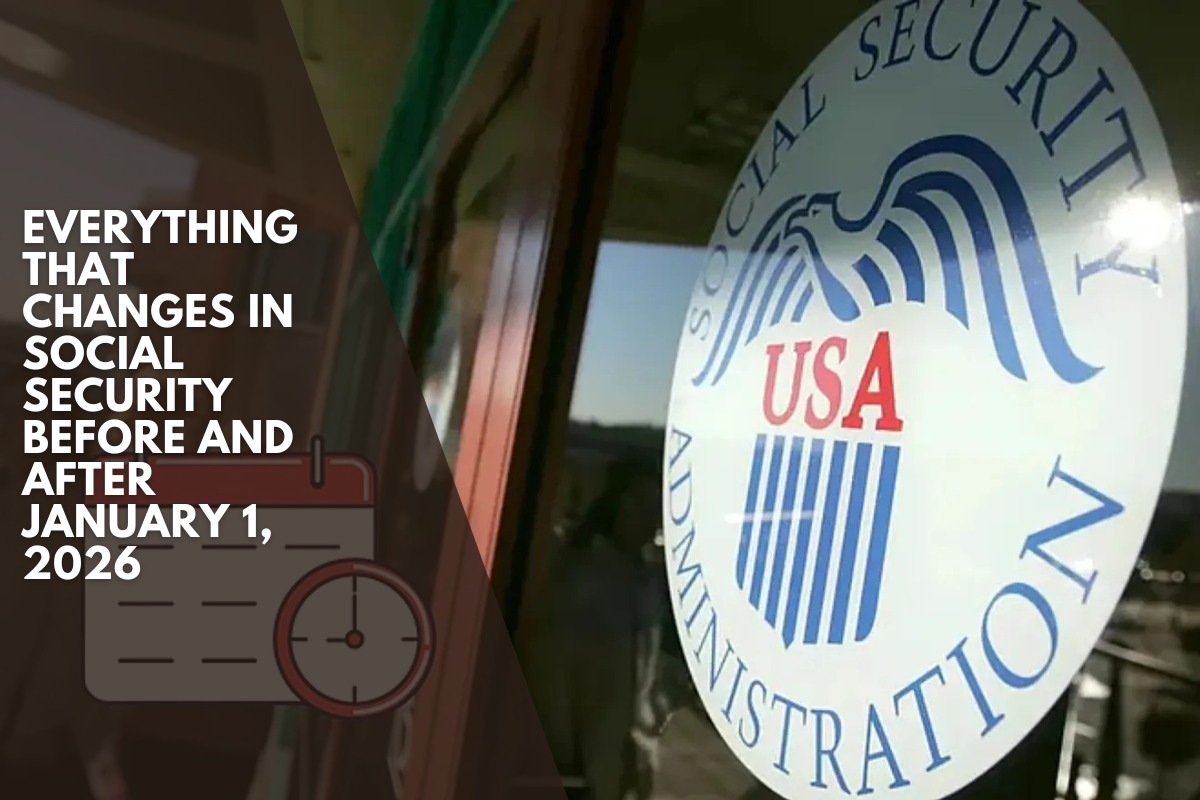President Franklin Delano Roosevelt signed the Social Security Act 90 years ago, establishing the program that now provides monthly benefit checks to millions of Americans, including retirees, disabled individuals, and families.
However, by the time the program celebrates its centennial, benefits may differ from current Social Security payments.
The reason for this is that Social Security’s trust funds, which are used to pay benefits, are about to run out.
Starting in 2033, two years before its centennial, the program may only be able to pay 77% of scheduled benefits to retirees, their families, and survivors, according to Social Security trustees in an annual report released in June.
However, if those funds are combined with Social Security’s trust fund for disability benefits, as has occurred in previous emergencies, payments may be reduced one year later, in 2034. At that point, Social Security trustees anticipate that 81% of scheduled benefits will be payable.
Importantly, Social Security benefits would not be eliminated entirely. The program would still receive ongoing revenue from payroll taxes to fund benefit payments.
That scenario is not inevitable. Changes to the program may be implemented sooner to secure its funding and avoid unexpected benefit cuts.
According to a new poll conducted by the Bipartisan Policy Center’s American Savings Education Council, 83% of surveyed Americans believe that Social Security reform should be a top priority for Congress, even if it means benefit cuts or tax increases for future beneficiaries. The group surveyed over 4,000 adults.
“This is the time for action,” said Sen. Bill Cassidy, R-Louisiana, one of the lawmakers pitching a plan to help restore the program’s solvency, to CNBC.com.
Pitch for a new $1.5 trillion investment fund
Cassidy has partnered with Sen. Tim Kaine, D-Virginia, to co-lead a bipartisan pitch, the centerpiece of which is a new $1.5 trillion investment fund for Social Security that is separate from the current trust funds.
The first $1.5 trillion would be borrowed. Cassidy stated that because the funds would be held in escrow and able to be liquidated, they would not add to the national debt.
The funds would be invested more aggressively than Social Security’s current trust funds, which are invested in United States Treasury bonds. These investments are secure because they are backed by the United States government’s full faith and credit. However, in 2024, the average one-year rate of return was approximately 2.5%.
In contrast, the S&P 500 has returned an annual average of approximately 10%, though these figures vary from year to year.
Cassidy believes that investing the proposed separate investment fund in stocks, bonds, and other investments could cover up to 70% of Social Security’s trust fund shortfall. That would make it much easier for lawmakers to address the remaining 30%, he explained.
According to Cassidy, the senators’ plan includes no benefit cuts or tax increases for seniors. It would increase benefits for two groups: beneficiaries aged 80 and older who are less than 200% of the federal poverty line, and low-income earners with a long work history and low wages.
Lawmakers could consider increasing the size of the investment fund to help cover the remaining shortfall, he said.
Rights to manage the fund would be awarded through a bidding process, which could result in lower fees and higher returns, Cassidy said.
Critics, including Rep. John Larson, D-Conn., have argued that investing in other securities, as suggested by the senators’ plan, would privatize Social Security, jeopardizing Americans’ retirement security.
Cassidy responds by citing the federal Railroad Retirement System, which in 2001 shifted from investing solely in government bonds to more aggressive instruments such as stocks. That change was approved by lawmakers from both sides of the aisle, and it has helped the program maintain a positive balance today.
Still, some experts are skeptical.
Andrew Biggs, a senior fellow at the American Enterprise Institute, wrote in a recent Wall Street Journal op-ed that, while he applauded the first bipartisan plan to fix Social Security in two decades, he is skeptical that it will work.
He expresses concerns about the amount of money that the plan requires the government to borrow, as well as the increased investment risk that would be required in the absence of a guarantee of higher returns.
Another proposal calls for the wealthy to pay more
Cassidy and Kaine aren’t the only lawmakers considering potential solutions to Social Security’s dilemma.
Larson has reintroduced a plan in multiple sessions of Congress that would increase benefits while raising taxes on the wealthy. Larson told CNBC.com that the last time Social Security was meaningfully enhanced was in 1971, under President Richard Nixon.
According to Larson, more than 5 million Americans currently receive Social Security checks that fall below the poverty line.
Larson’s most recent proposal for 2023 would temporarily increase benefits for all beneficiaries while also providing specific enhancements for those receiving minimum benefits, widows or widowers in two-income households, and children of deceased, disabled, or retired workers who are full-time students. The plan also suggests changing how annual cost-of-living adjustments are calculated.
Larson’s plan calls for payroll taxes on income over $400,000 to pay for the benefit increases. Workers who earn more than $176,100 per year in 2025 will no longer contribute to Social Security. Both employers and employees pay a 6.2% tax on wages up to that amount.
According to a Bipartisan Policy Center poll, the majority of Americans, 65% of Democrats and 62% of Republicans, support raising the income cap subject to payroll taxes. According to the findings, a “significant majority” of respondents have an annual household income of more than $200,000.
Larson’s plan also included a separate 12.4% tax on net investment income for taxpayers earning more than $400,000.
Larson intends to reintroduce his plan in the current session of Congress with some changes.
“We’ll be rolling out a presentation in September that will include not only protecting Social Security, but also enhancing it,” Larson informed the crowd.
The plan will also require Congress to act more frequently to ensure that benefits continue to meet people’s needs, he said.
“I think that that’s got to be paramount to keeping this in check,” Larson told reporters.
Larson intends to push for a vote on his bill. However, he also wants an open debate.
“There has to be a public discussion,” Larson stated.
What Americans want from Social Security
According to a recent poll by the Bipartisan Policy Center, the majority of Americans—64% of Democratic voters and 61% of Republicans—want Congress to work across party lines to reform Social Security.
According to the BPC, 41% of surveyed Americans expect Social Security to be their primary source of retirement income. Furthermore, 74% of Americans are concerned that Social Security will run out before they retire, while 80% fear that Congress will reduce benefits.
Nonetheless, poll results show that Americans would welcome a “comprehensive, balanced reform package that entails both benefit adjustments and tax increases,” according to Emerson Sprick, director of retirement and labor policy at the Bipartisan Policy Center.
Increasing taxes on the top 1% to help repair the program’s finances received the most support from BPC poll respondents, with 85% of Democrats and 72% of Republicans. In contrast, 65% of Democrats and 62% of Republicans support raising the payroll tax cap.
A majority of voters also support adjusting benefits for those in greatest need, with 63% of Democrats and 62% of Republicans; reducing benefits for higher income individuals, with 64% of Democrats and 61% of Republicans; and increasing the amount that both employees and employers contribute to the program, with 61% of both Democrats and Republicans. Most voters, including 64% of Democrats and 54% of Republicans, support legal immigration, which would result in more workers paying into the program.
The urgency of addressing Social Security’s funding issues will grow over time.
Two new laws have provided generous benefits to certain Social Security beneficiaries. The Social Security Fairness Act increased benefits for some public pensioners, and President Donald Trump’s “big beautiful” budget and tax plan includes a tax break for seniors.
The changes in both laws will hasten the trust fund’s depletion dates. The Fairness Act was included in the Social Security trustees’ most recent projections.
According to the Committee for a Responsible Federal Budget, recent “big beautiful” legislation will push the retirement trust fund’s insolvency date to late 2032, up from the trustees’ projection of early 2033.
Senators elected in 2026 will serve during the projected depletion deadlines, according to Sprick.
Sprick predicted that as the trust fund depletion dates approach, there will be more discussion about Social Security’s future on Capitol Hill. He described the current proposals on Capitol Hill as a starting point.
“We’ve put this off for way too long; the political process moves very slowly,” Sprick stated. “But that does not negate the fact that these conversations are moving in the right direction.”












